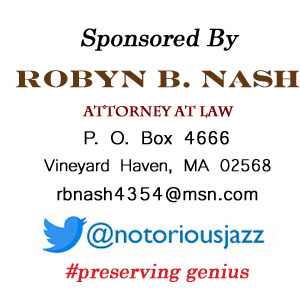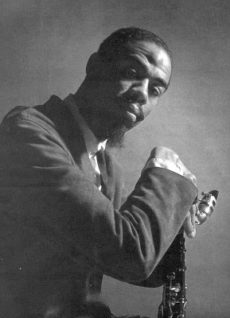
Three Wishes
Responding to her question of three wishes Eric Dolphy gave Nica only two answers:
- “To continue playing music all my life.”
- “A home and a car in New York. That’s all.”
*Excerpt from Three Wishes: An Intimate Look at Jazz Greats – Complied and Photographed by Pannonica de Koenigswarter
More Posts: baroness,clarinet,flute,history,instrumental,jazz,musician,pannonica,saxophone,three,wishes
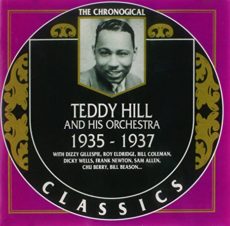
Daily Dose Of Jazz…
Teddy Hill was was born on December 7, 1909 in Birmingham, Alabama. After moving to New York City, he had early gigs with the Whitman Sisters, George Howe and Luis Russell’s orchestra in the Twenties. He later put together his own band in 1934, which found steady work over the NBC radio network.
Over several years it featured such major young musicians as Dizzy Gillespie, Bill Coleman, Roy Eldridge, Bill Dillard, Dicky Wells, Russell Procope, Howard E. Johnson, Chu Berry, Sam Allen, John Smith, Richard Fullbright, Bill Beason, Shad Collins, Bill Dillard, Frank Newton, Kenneth Hollon, Cecil Scott, Beatrice Douglas and Robert Carroll.
They played at the Savoy Ballroom regularly, and toured England and France in the summer of 1937. In 1935, he recorded a four song session for the American Record Corporation. In 1936, he recorded two sessions for Vocalion, then signed with Bluebird the following year and recorded 18 songs over three sessions.
After leaving the band business, Hill began managing Minton’s Playhouse in 1940, which became a Harlem hub for the bebop style, featuring such major musicians as Thelonious Monk and Kenny Clarke. Leaving Minton’s in 1969, long after its musical significance had waned, he then became the manager of Baron’s Lounge.
Married twice, Teddy had two daughters, Gwendolyn and Beatrice, one by each wife. Beatrice would later emerge as the successful actress and singer known by her stage name, Melba Moore.
Drummer, clarinetist, soprano and tenor saxophonist Teddy Hill, who was also a big band leader and the manager of Minton’s Playhouse in Harlem, passed away on May 19, 1978 in Cleveland, Ohio.
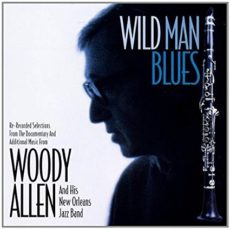
Daily Dose Of Jazz…
Heywood Allen was born Allan Stewart Konigsberg on December 1, 1935 in Brooklyn, New York. He began playing the clarinet as a child and took his stage name from clarinetist Woody Herman. He has performed publicly at least since the late 1960s, notably with the Preservation Hall Jazz Band on the soundtrack of Sleeper. One of his earliest televised performances was on The Dick Cavett Show on October 20, 1971.
Woody Allen and his New Orleans Jazz Band have been playing each Monday evening since 2011 at Manhattan’s Carlyle Hotel, specializing in classic New Orleans jazz from the early twentieth century. He plays songs by Sidney Bechet, George Lewis, Johnny Dodds, Jimmie Noone and Louis Armstrong.
The documentary film Wild Man Blues directed by Barbara Kopple documents a 1996 European tour by Allen and his band, as well as his relationship with Previn. The band has released two CDs: The Bunk Project in 1993 and the soundtrack of Wild Man Blues in 1997. Allen and his band played the Montreal International Jazz Festival on two consecutive nights in June 2008. At 81, clarinetist Woody Allen continues to perform with his band when not writing scripts or directing and acting in films.
More Posts: clarinet
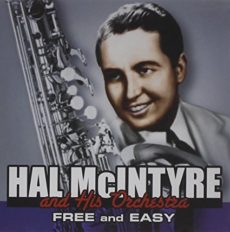
Daily Dose Of Jazz…
Hal McIntyre was born Harold William McIntyre on November 29, 1914 in Cromwell, Connecticut. McIntyre played extensively as a teenager and led his own octet in 1935. Shortly thereafter, he was offered a temporary slot as an alto saxophonist behind Benny Goodman, but this lasted only ten days. However, Glenn Miller heard of his ability and drafted him as a founding member of the Glenn Miller Orchestra, where he played from 1937 to 1941.
Miller encouraged him to start his own group again, and the McIntyre Orchestra first hit the stage in New Rochelle, New York in 1941. The group included vocalists Gloria Van, Ruth Gaylor, and Al Nobel, bassist Eddie Safranski, and saxophonist Allen Eager. Playing the major ballrooms throughout the United States, they also performed overseas for the troops during World War II.
At the beginning of 1945, Hal and his orchestra had a weekly broadcast on the Blue Network. One feature of the program was that on each program the orchestra would play the theme song of one of America’s college fraternities, saluting some member who had distinguished himself in the war.
Touring extensively with songstress Sunny Gale until the summer of ’51, he maintained the orchestra well into the decade, backing The Mills Brothers for their 1952 smash hit Glow Worm. Hal co-wrote the song Daisy Mae with Billy May which was recorded by Glenn Miller and His Orchestra.
Critically injured in an apartment fire in 1959, saxophonist, clarinetist, and bandleader Hal McIntyre passed away at a hospital a few days later on May 5, 1959 in Los Angeles, California.
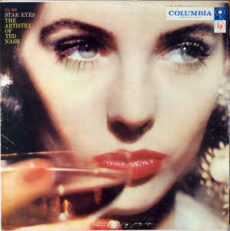
Daily Dose Of Jazz…
Theodore Malcolm Nash was born on October 31, 1922 in the Boston suburb of Somerville, Massachusetts. His goal was to become a classical flutist until he began playing saxophone in his early teens. His professional career began when he went on the road with a succession of dance bands, landing the solo tenor chair with the Les Brown band in 1944 where he rapidly made a name for himself.
His playing was notable for his mastery of the extreme altissimo register of the saxophone. He authored Ted Nash’s Studies in High Harmonics for Tenor and Alto Saxophone published in 1946, that is still in print.
In the late 1940s Ted became part of the thriving Hollywood movie and television recording industry. In 1956 he recorded with Paul Weston’s orchestra the hit album Day by Day, with vocals by his former colleague and close friend, Doris Day.
He was featured on The Music from Peter Gunn soundtrack album performing the bluesy, high-energy alto sax solo on the theme as well as the wistful alto sax solo on the second bridge of Dreamsville. Henry Mancini composed The Brothers Go to Mother’s from Peter Gunn as a feature for Ted and and his trombonist Dick.
From the mid 50s through the end of the Sixties he recorded sixteen albums with Georgie Auld. Henry Mancini, Elmer Bernstein, Pete Rugolo, Lalo Schifrin. Saxophone, flute and clarinet Ted Nash, who was a first-call session musician in the Hollywood recording studios, passed away on May 12, 2011.



